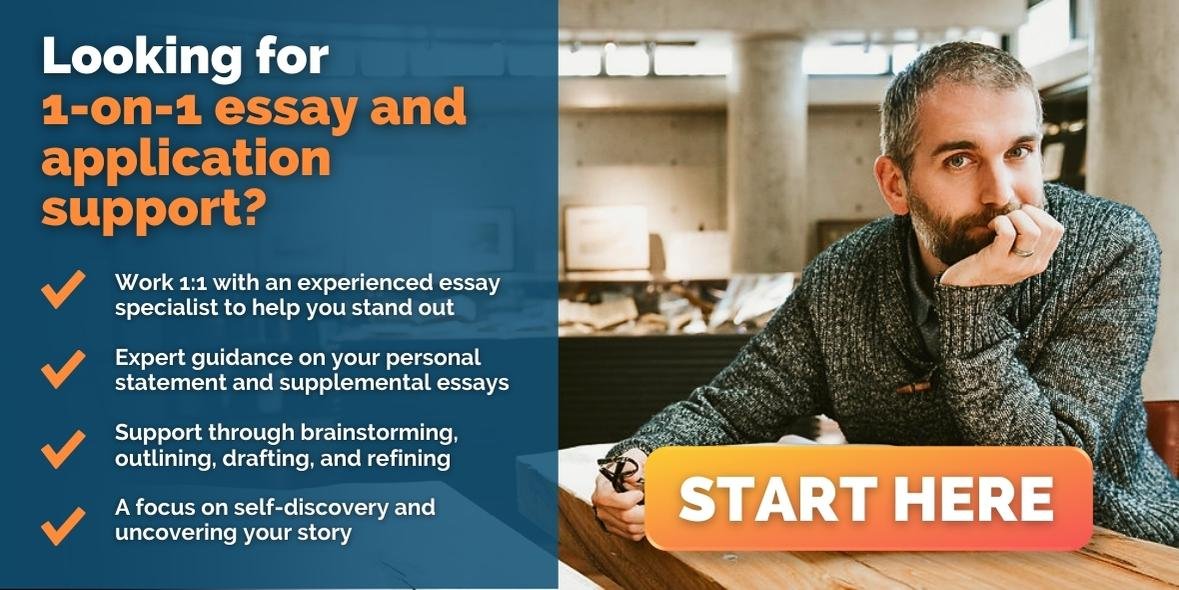1.7 - NARRATIVE STRUCTURE & Sample essay
| This lesson covers... | how to tell a good story. |
| By the end you should... | understand the basic elements of a narrative essay and be able to apply them to your own writing. |
| Time | 3 minutes |
| College Essay Essentials | paperback: 14-19 | ebook: pages 15-20 |
Here’s the structure that most American films use. It’s a structure as old as storytelling itself, and storytellers have been using it for thousands of years. I’ll refer to it as narrative structure. You can think of this approach to writing an essay as breaking down into three basic sections:
Challenges + Effects
What I Did About Them
What I Learned
While those may be fairly clear just based on their names, here’s a brief breakdown, followed by a sample essay to illustrate:
Challenges + Effects
This part gets into specific detail regarding a specific challenge the student has faced, and the various effects of that challenge. Tough stuff you’ve been through. Big experiences. Their subsequent impacts. Various obstacles you’ve had to overcome.What I Did About Them
Actions you took to overcome those challenges and their effects, often to meet specific needs. These actions help to illustrate your values and growth.What I Learned
Lessons and insights you’ve gained through these experiences. Reflection on how your experiences have shaped you and why that matters.
Here’s a sample essay that follows this format:
WHAT HAD TO BE DONE
At six years old, I stood locked away in the restroom. I held tightly to a tube of toothpaste because I’d been sent to brush my teeth to distract me from the commotion. Regardless, I knew what was happening: my dad was being put under arrest for domestic abuse. He’d hurt my mom physically and mentally, and my brother Jose and I had shared the mental strain. It’s what had to be done.
Living without a father meant money was tight, mom worked two jobs, and my brother and I took care of each other when she worked. For a brief period of time the quality of our lives slowly started to improve as our soon-to-be step-dad became an integral part of our family. He paid attention to the needs of my mom, my brother, and me. But our prosperity was short-lived as my step dad’s chronic alcoholism became more and more recurrent. When I was eight, my younger brother Fernando’s birth complicated things even further. As my step-dad slipped away, my mom continued working, and Fernando’s care was left to Jose and me. I cooked, Jose cleaned, I dressed Fernando, Jose put him to bed. We did what we had to do.
As undocumented immigrants and with little to no family around us, we had to rely on each other. Fearing that any disclosure of our status would risk deportation, we kept to ourselves when dealing with any financial and medical issues. I avoided going on certain school trips, and at times I was discouraged to even meet new people. I felt isolated and at times disillusioned; my grades started to slip.
Over time, however, I grew determined to improve the quality of life for my family and myself.
Without a father figure to teach me the things a father could, I became my own teacher. I learned how to fix a bike, how to swim, and even how to talk to girls. I became resourceful, fixing shoes with strips of duct tape, and I even found a job to help pay bills. I became as independent as I could to lessen the time and money mom had to spend raising me.
I also worked to apply myself constructively in other ways. I worked hard and took my grades from Bs and Cs to consecutive straight A’s. I shattered my school’s 1ooM breaststroke record, and learned how to play the clarinet, saxophone, and the oboe. Plus, I not only became the first student in my school to pass the AP Physics 1 exam, I’m currently pioneering my school’s first AP Physics 2 course ever.
These changes inspired me to help others. I became president of the California Scholarship Federation, providing students with information to prepare them for college, while creating opportunities for my peers to play a bigger part in our community. I began tutoring kids, teens, and adults on a variety of subjects ranging from basic English to home improvement and even Calculus. As the captain of the water polo and swim team I’ve led practices crafted to individually push my comrades to their limits, and I’ve counseled friends through circumstances similar to mine. I’ve done tons, and I can finally say I’m proud of that.
But I’m excited to say that there’s so much I have yet to do. I haven’t danced the tango, solved a Rubix Cube, explored how perpetual motion might fuel space exploration, or seen the World Trade Center. And I have yet to see the person that Fernando will become.
I’ll do as much as I can from now on. Not because I have to. Because I choose to.
In a little bit, we’ll explore an exercise that can lead directly to this kind of essay structure.









